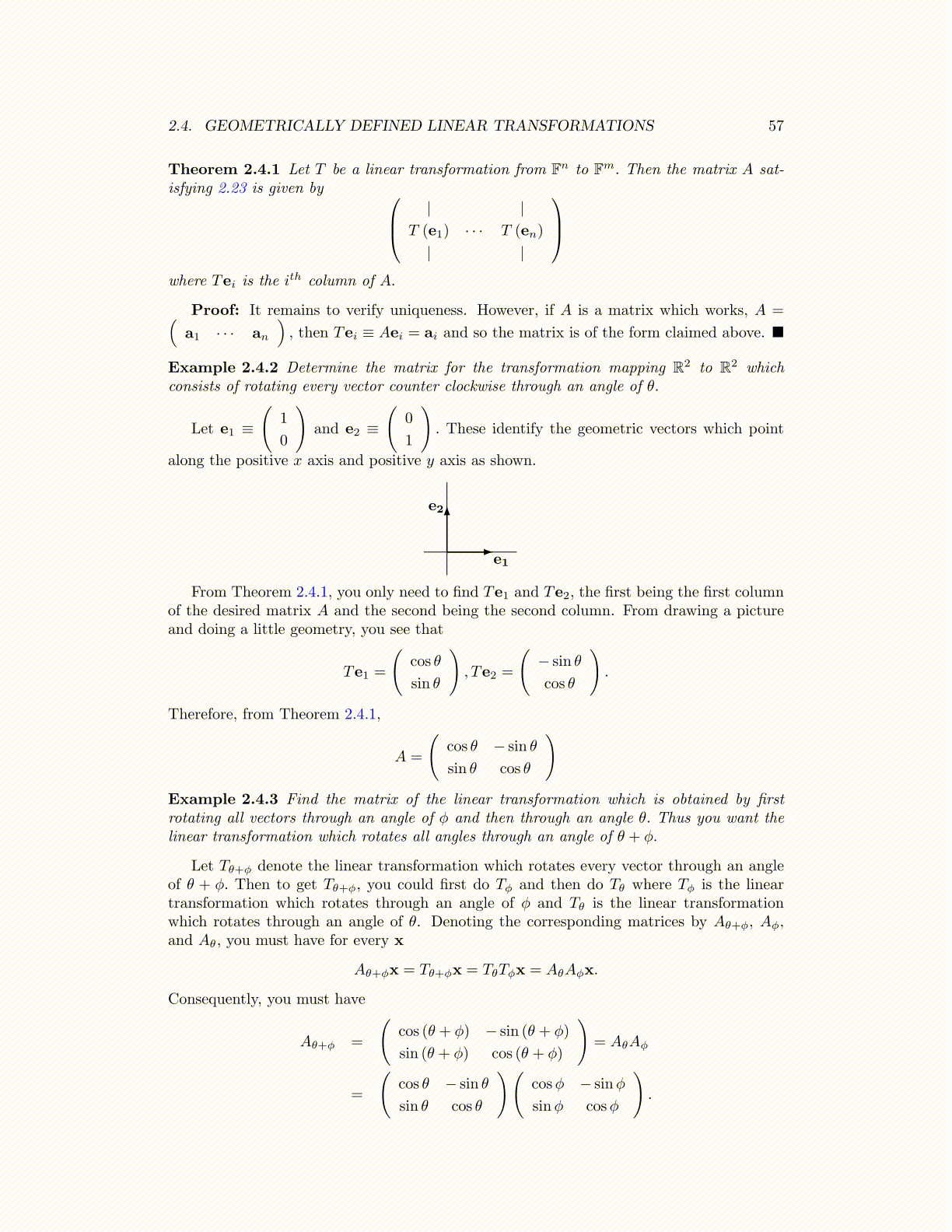
2.4. GEOMETRICALLY DEFINED LINEAR TRANSFORMATIONS 57
Theorem 2.4.1 Let T be a linear transformation from Fn to Fm. Then the matrix A sat-isfying 2.23 is given by | |
T (e1) · · · T (en)
| |
where Tei is the ith column of A.
Proof: It remains to verify uniqueness. However, if A is a matrix which works, A =(a1 · · · an
), then Tei ≡ Aei = ai and so the matrix is of the form claimed above. ■
Example 2.4.2 Determine the matrix for the transformation mapping R2 to R2 whichconsists of rotating every vector counter clockwise through an angle of θ.
Let e1 ≡
(1
0
)and e2 ≡
(0
1
). These identify the geometric vectors which point
along the positive x axis and positive y axis as shown.
e1
e2
From Theorem 2.4.1, you only need to find Te1 and Te2, the first being the first columnof the desired matrix A and the second being the second column. From drawing a pictureand doing a little geometry, you see that
Te1 =
(cos θ
sin θ
), Te2 =
(− sin θ
cos θ
).
Therefore, from Theorem 2.4.1,
A =
(cos θ − sin θ
sin θ cos θ
)Example 2.4.3 Find the matrix of the linear transformation which is obtained by firstrotating all vectors through an angle of ϕ and then through an angle θ. Thus you want thelinear transformation which rotates all angles through an angle of θ + ϕ.
Let Tθ+ϕ denote the linear transformation which rotates every vector through an angleof θ + ϕ. Then to get Tθ+ϕ, you could first do Tϕ and then do Tθ where Tϕ is the lineartransformation which rotates through an angle of ϕ and Tθ is the linear transformationwhich rotates through an angle of θ. Denoting the corresponding matrices by Aθ+ϕ, Aϕ,and Aθ, you must have for every x
Aθ+ϕx = Tθ+ϕx = TθTϕx = AθAϕx.
Consequently, you must have
Aθ+ϕ =
(cos (θ + ϕ) − sin (θ + ϕ)
sin (θ + ϕ) cos (θ + ϕ)
)= AθAϕ
=
(cos θ − sin θ
sin θ cos θ
)(cosϕ − sinϕ
sinϕ cosϕ
).